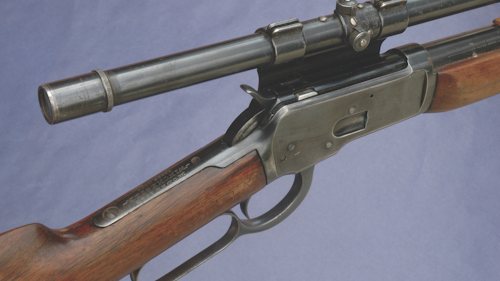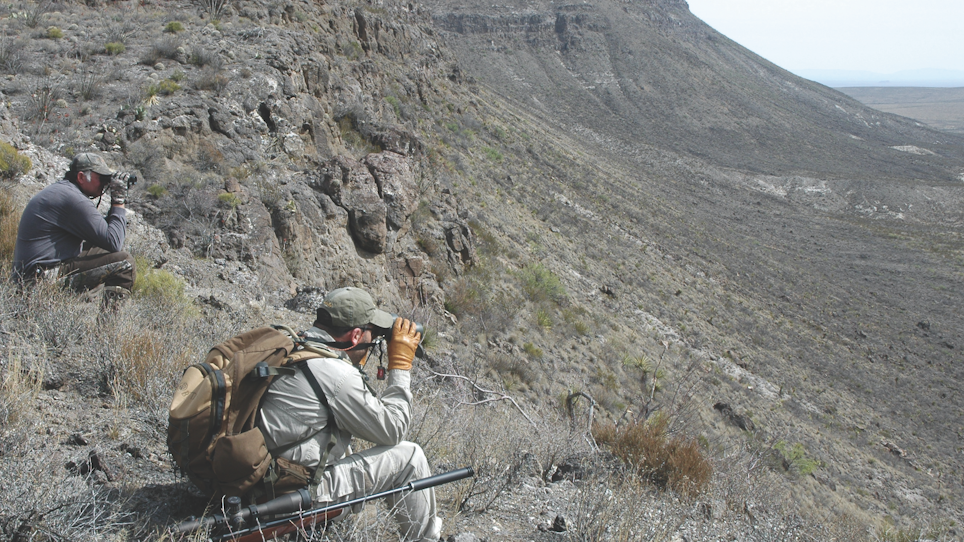A fox should appear big and crisp behind your crosshair and drop neatly to your shot. The fox I remember best was a blur over the front blade and tumbled, mid-sprint, in a tornado of snow.
Fast shots up close hike my pulse, but whether you call predators or play long-range sniper, odds are you aim through a scope. Indeed, few rifles bored for the .22s, 6mms and .25s popular with predator hunters now wear iron sights. But scopes have become a mighty big family.
Riflescopes famously made their military debut during our Civil War. Those barrel-length optics were dark as plumbing inside, with thick, fuzzy crosshairs. Europeans led the race to shorter and brighter scopes. In 1902, as two Ohio bicycle mechanics built their first powered airplane, Zeiss developed a riflescope with an erector system. In 1904, the Wright brothers’ flying machine stayed aloft for 852 feet near Kitty Hawk, North Carolina, and Zeiss developed a compact “prism” scope. In 1921, the Zeiss Zeildovier and Zieldosechs had variable power and illuminated reticles! A 1926 Zeiss catalog shows a 2.5X Zeilklen at $25, a 4X Zeilvier at $45, 1-4X and 1-6X variables at $66. Tubes, “with the lens socket” were drawn in one piece. A #1 “graticle” had a post and bars, the gap between subtending 25.2 inches at 100 yards. By 1928, Zeiss controlled M. Hensoldt & Sons, founded in Wetzlar by Hensoldt and Kellner in 1849.
As Hitler came to power in the 1930s, a Zeiss engineer found that coating lenses with magnesium fluoride reduced light lost to reflection and refraction — up to 4 percent at each air-glass surface. After the war, optics firms worldwide adopted coated lenses to make scopes brighter. Positive internal adjustments and constantly centered reticles followed, as did fog-proofing courtesy Leupold in 1949. Alloy replaced steel tubes. These improvements made scopes more useful.
But as with saltshakers, shovels and sedans, there are limits to the benefits of bigger scopes. The market now has some monsters. The new Blaser Infinity 4-20x58 weighs 31 ounces, the Zeiss Victory V8 4.9-35x60 scales 34 (with 36mm tube). Nightforce has a 40-ounce 5-25x56 (34mm), and Vortex’s Razor HD is a 4.5-27x56 (34mm) that weighs 48 ounces!
Such numbers dwarf the dimensions and weights of early scopes. Leupold’s 2 ½X Plainsman had a 7/8-inch alloy tube and weighed 4.5 ounces! I have an old Savage 340 in .222 that wears a Weaver B6, a 6X introduced in 1954. The front lens measures a half inch across, the rear lens just 13/16 of an inch. This scope weighs 7 ounces — with a steel 3/4-inch tube!
The prototype variable with 1-inch tube was for years Leupold’s 3-9X Vari-X II. Announced in 1965, it scaled under 13 ounces, same as its predecessor, the 3-9X Vari-X (1961). Since then, bigger front glass and more features have boosted riflescope weight and bulk. Bigger tubes have afforded wider W/E adjustment range and/or bigger erector lenses for better target resolution.

No one can tell you what you need in a riflescope, or how much to spend. My first hunting glass listed for $39.50; a 20X that helped me win smallbore matches set me back $100. A scope that brings you the most hits is your best scope, whatever it has or lacks in features, no matter its size or cost or how well it performs in other applications.
Any scope should help you see. That is, it should transmit light and resolve images clearly. What we see is really the play of light on what we think we see. On a starless night, we’re blind to creatures and landscapes clearly visible in daylight. Big objective lenses transmit more light than do small ones and, if equal in quality, better resolve images. Lenses carefully ground and polished yield crisp sight pictures all but free of distortion and aberrations. Multi-coating delivers maximum light or brightness.
How much power is necessary? Not as much as many hunters use. Is a bobcat 50 yards away near enough to shoot with an iron-sighted rifle? Most hunters would say so. Is a 6X scope powerful enough for a 300-yard poke at the same bobcat? Most hunters would opt for more magnification. Yet in both these cases, the target is and appears the same size, and the 6X scope doesn’t obscure nearly as much of it!
With eye relief and field size, magnification completes an optical triangle. Change one, and you affect the others. To stop a grizzly before you become a scratching post, you want a generous field; far-off details don’t matter. A distant coyote poses a different challenge. A more common one.
High power magnifies wobble as it shrinks field. Through a 20X scope you see about half what you’ll see through the average soda straw. High power also limits eye relief and exit pupil — the shaft of light reaching your eye and a common measure of how bright an image appears under dim conditions. To calculate EP, divide magnification into objective lens diameter (mm). Increase power, and you must boost lens diameter to prevent a reduction in EP and brightness. By the way, an EP bigger than your eye’s pupil (which shrinks in good light) doesn’t make the image brighter, but it can help you aim faster. Your eye has more latitude off the scope’s axis in which to get a full sight picture.
Target and “varmint” shooters have happily traded big EPs for high magnification, because most, if not all their shooting is deliberate, in daylight that doesn’t demand a big EP. Variable-power hunting scopes have been designed so near the middle of the power range you get a 6mm exit pupil — about as big as a young, healthy eye dilates in dim shooting light. A 3-9x40, for example, has a 6mm EP between 6X and 7X. Higher magnification has led to bigger front lenses, which can make scopes heavy and unwieldy. Wider power ranges have contributed to this problem.
An early hunting scope I recall was a 2 ½-5X. It wasn’t continuously variable. You could choose 2 ½X or 5X by turning a knob on the turret. Then the three-times power range arrived — top magnification three times the bottom, per a 3-9X scope. As pricing began to catch up with other advances in optics, we got four-times magnification — 1.5-6X, 4-16X — and bigger 30mm tubes. In 2007, Swarovski introduced the Z6, with six-times range. Hefty at nearly 17 ounces, it still bellied nicely into low rings. Swarovski’s Z5 offers five-times magnification in a 1-inch tube, as does Weaver’s SuperSlam series. Leupold’s six-times VX-6 2-12x42 weighs less than either, despite its 30mm tube.
Increasing power range hikes costs, optically and at sales counters. Mark Thomas, who founded Kruger Optical in Sisters, Oregon, has designed more than 300 riflescopes, also a three-cam system for wide-range variables.
“Wider ranges require more components,” Thomas told me. “Some are lenses to correct for aberrations that appear as each lens works harder. Adding glass, you must make the erector assembly longer. So, the main tube must be longer too. Think ounces, complexity. Then, to ensure a useful range of W/E adjustment, you increase main tube diameter. You can then make erector lenses bigger to improve resolution, or leave them of standard size for more elevation adjustment.”
A Leupold engineer pointed out that erector assembly tolerances are tight, at “half a thousandth.” Lenses in a six-times scope travel about twice as far as in three-times systems, so variation in components has twice the effect on images. That’s one reason wide-range variables have been late in coming. Before CNC machines, tooling couldn’t hold tolerances close enough.
Wide-range variables have gained almost all their breadth at the top end, adding power that called for increasingly larger objective glass to yield usable exit pupils. Besides the greater cost of generous front lenses, shooters have had to mount scopes higher so the bell clears the barrel. A high sightline lifts your head off the stock. A heavy scope perched high impairs rifle balance and handling. While 1-inch and now 30mm rings are common and affordable, rings for oversize tubes come dear.
These considerations haven’t slowed the tide of big scopes reaching markets. On the other hand, a predator rifle isn’t shore artillery. You must carry it and aim it, perhaps at a close, sprinting fox. I like to keep objective bells slim enough for low rings, and scope weight to 15 percent of rifle weight — a 1-pound scope for a 7-pound rifle.
Cosmetically, such scopes appeal to me. More importantly, they keep my rifle lively in hand and help me shoot accurately from field positions. I’ve yet to fire at a predator so small or so distant that I felt helpless with a 10X sight.
How to Zero Your Riflescope
To check click values and how well adjustments repeat, shoot “around the square.”
To do this, fire a group at “zero” setting, then spin 20 clicks up and fire again. Then it’s 20 right, 20 down and 20 left back to zero, firing three shots at every change.
Quarter-minute dials should put groups 5 inches apart, the last atop the first. Don’t fret if the shifts aren’t exactly 5 inches, as long as they’re consistent. Trajectory-matched or load-specific dials make sense for long shooting. They’re machined and marked so bullets land on target at the range indicated on the dial.
Many firms now offer one custom dial with every scope purchase. Just specify the factory load, or send ballistic data for your handload. You can easily switch out standard dials.






